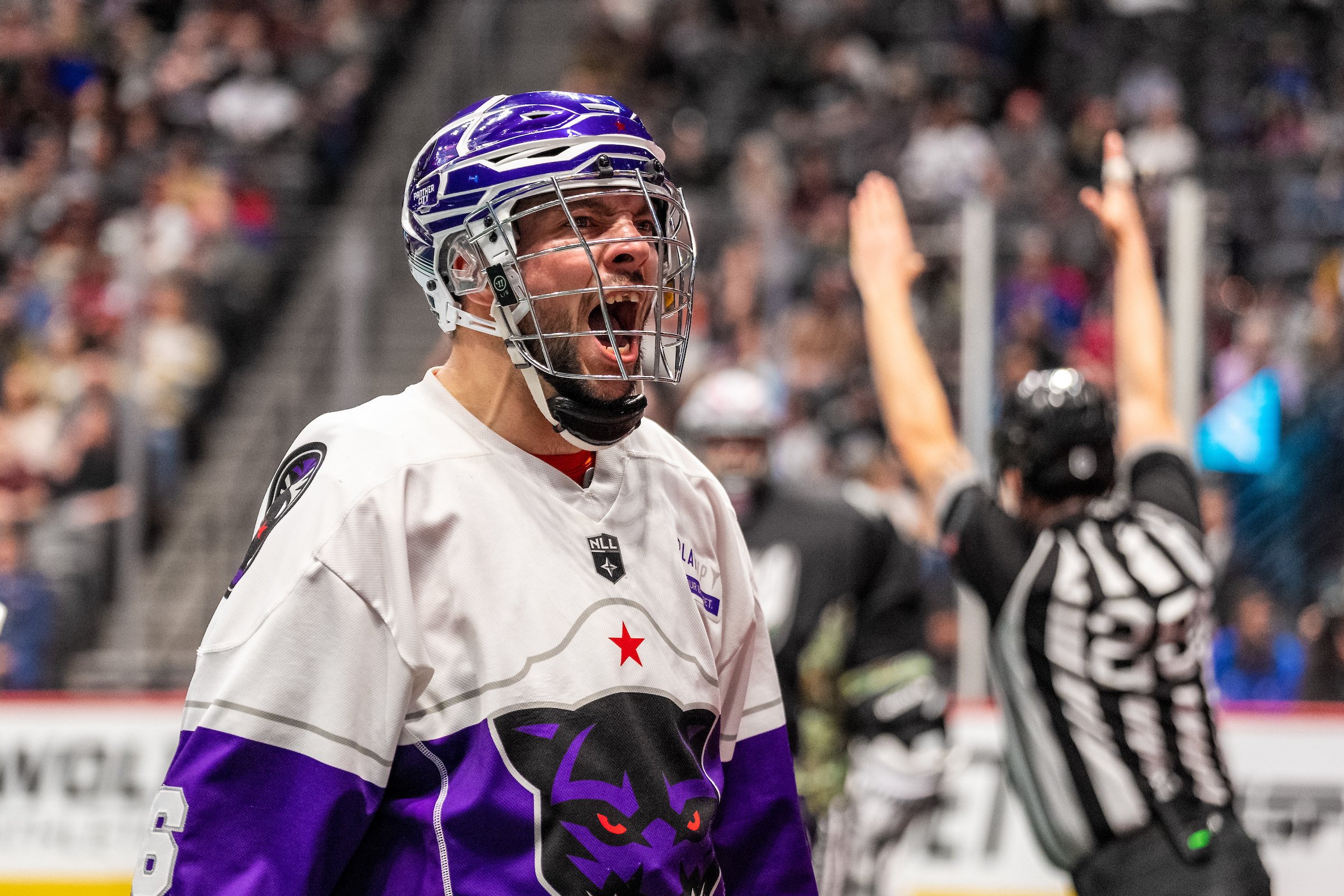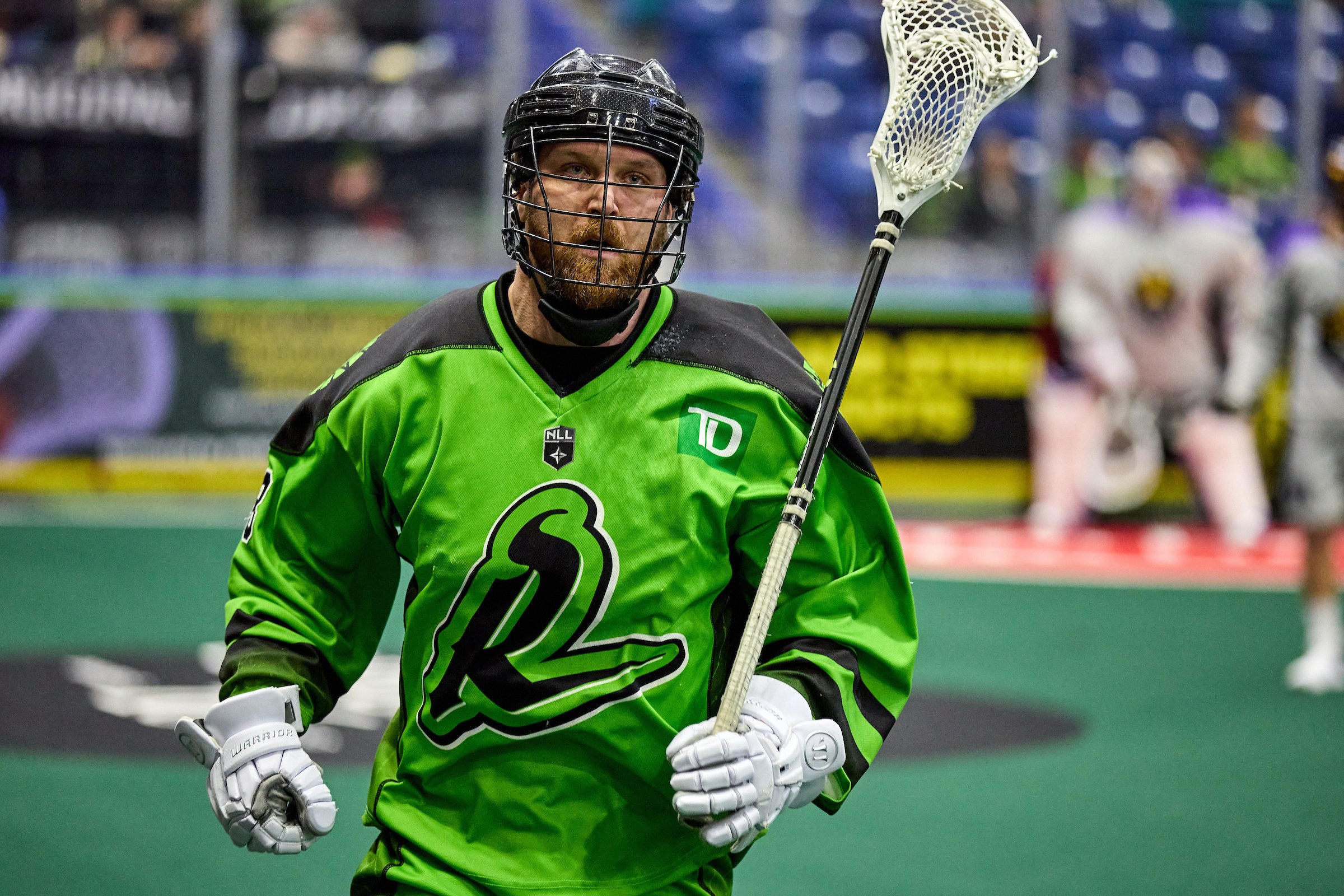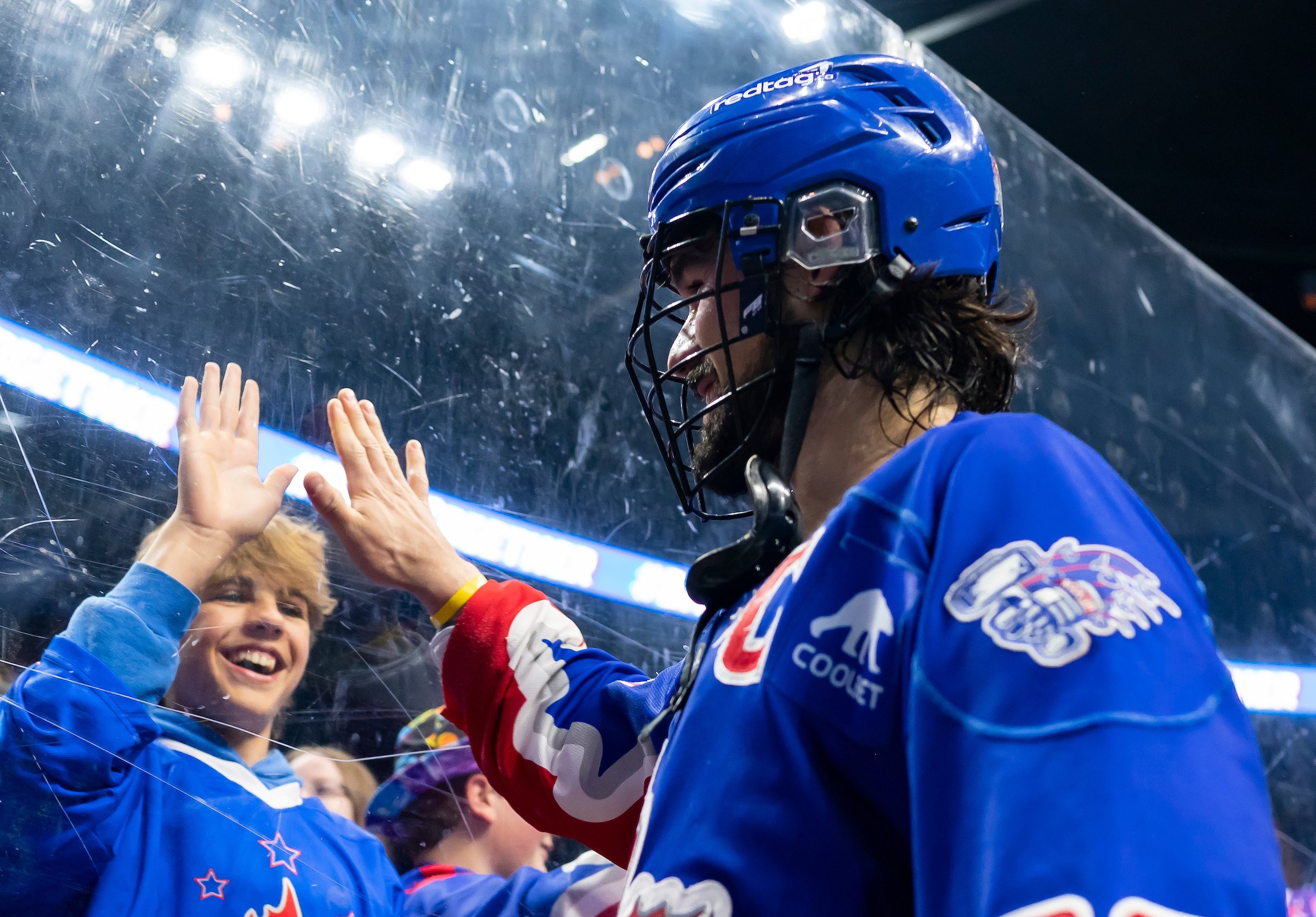NLL Player Rankings: 2023 Transition Player of the Year
While The Lax Mag’s National Lacrosse League Player Rankings typically orders the league’s Top 30 players from #1 to #30 since soon after the league’s opening weekend and right up to the end of the regular season, now that we’re in playoff mode, we’re shifting our focus to NLL Year-End Awards.
Specifically, who our rankings system (more on that here) says should win all of the NLL’s most important end-of-season honours.
Last year, The Lax Mag’s Player Rankings math correctly predicted 2022’s MVP (Dhane Smith), Defensive Player of the Year (Mitch de Snoo), Goalie of the Year (Matt Vinc), Transition Player of the Year (Zach Currier) and Rookie of the Year (Jeff Teat).
How about this year? We’re starting with 2023’s rookie class and working our way to MVP prior to the NLL Cup being awarded. Our Player Rankings: Best Dressed Edition, which generated more traffic than the other five combined, will come out after the playoffs.
Josh Medeiros, Panther City Lacrosse Club (Photo: John Harrison)
Transition Player of the Year
Last year, we spent a lot of time reviewing the various types of transition players in the league today, and basically concluded that the position (which is more of a role really) has been so mangled over the years, a “T” is essentially a positional category to place players in that don’t play strictly offensive (F) or defensive (D) minutes.
The National Hockey League’s Frank J. Selke Trophy is…
…an annual award given "to the forward who best excels in the defensive aspects of the game." The winner is selected in a poll of the Professional Hockey Writers' Association at the end of the regular season.
The award is kind of a reverse NLL TPOTY, which originally was intended to celebrate offensively gifted defensemen, and still mostly does, well, kind of. Either way, the Selke doesn’t force NHL clubs to further define their forward and ultimately rule out players that eventually excel going back into their own end. It’s not a positional based award, but rather requires voters to evaluate all offensive players that excel in the defensive skills associated with that role. No one deserving is ever excluded.
Yesterday, the NLL released their final three finalists for all of their 2023 year-end awards. There was, again, some oddness surrounding the Transition Player & Defensive Player positions.
One of the long-standing traits of a transition player is their ability to produce points on an offensive press (or transitioning the ball up the floor and contributing to their team’s offense). This year’s highest point-producing defensive player (D) was the Toronto Rock’s Latrell Harris (10G, 20A), all of his points coming almost immediately after the Rock regained possession in their own end and then raced up the floor. It’s the same former Rock players like Jim Veltman & Steve Toll did regularly back in the day. It’s those players specifically the award was intended for. Harris was ineligible for TPOTY consideration due to his positional classification.
The Vancouver Warriors’ Reid Bowering, who had a D beside his name all season, was instead submitted as a transitional player for this year’s awards. He did make 2023’s final three for the T trophy. Bowering trailed Harris in all offensive categories, but topped him in the more defensive-minded ones. Bowering, who again put up impressive loose ball (210) and caused turnover numbers (28) even after missing three games, reads more defense than transition this year, but isn’t? We’re honestly asking. What position does he play?
Which brings us back to the question we asked last year and have again this year: what is the definition of a transition player today? Well, by assumed definition, they either need a T listed by their name during the season and/or submitted as a transition player by their team come award nom szn. A player’s performance seemingly has no bearing on his positional classification, or at least doesn’t have to.
With an incredible 19 assists from Calgary’s crease this year, if goalie Christian Del Bianco was submitted as a transition player - and you could legitimately argue that his outrageous outlet is certainly critical to Calgary’s transitional offensive success - a few weeks ago, could he have been considered for TPOTY? Probably?
Although there doesn’t appear to be a rule regarding this, a team cannot nominate the same player for both the TPOTY & DPOTY category, whether their regular-season resume confirms their ability to excel in either “position” or not.
Top 10 Transition Players
Anyways, a year later and we’re still unsure how this position is classified, but here are our Top 10 transition players from the 2023 NLL regular season based on our year-long calculations (more on that here) of every player in the league. #1 is of course our pick to win TPOTY.
Ryan Terefenko, Halifax Thunderbirds (Photo: Trevor MacMillan)
10. Ryan Terefenko, Halifax Thunderbirds
He was a loose-ball machine during his rookie season in 2022, but this year Terefenko was more well-rounded defensively, more confident & composed when he crossed centre, and was a high-energy asset for Halifax all season long. Terefenko more than doubled all his offensive numbers, and was second overall in the league behind Bowering for LB scoops by a non-full-time-face-off taker. That’s a nasty resume after just two years in the big leagues.
9. Bryan Cole, Georgia Swarm
He played many meaningful forward minutes for the Swarm this season, but Cole, who is still listed as a T, is also one of the more versatile players in the league. Cole set new single-season goals (15), assists (27) and points (42) personal bests with an ever evolving role up front, is still called upon to play defense-first minutes in Georgia’s own end, while his backchecking (reverse transition) – one of the modern era’s most important roles – keeps the opposition’s press in check.
Mike Messenger, Saskatchewan Rush (Photo: Brent Just)
8. Mike Messenger, Saskatchewan Rush
Many anticipated that Messenger would become a bigger offensive asset for the Rush this year, but with one less shot than he took a season ago (and two less goals), that never really happened. With that said, Messenger still has above average O numbers for a super-physical defensive player, especially one that took over 400 face-offs this year. As always, his LB (166) & CTO (27) totals were much higher than most.
7. Shane Simpson, Calgary Roughnecks
Much like the player her grew up idolizing – the former & very first TPOTY, Steve Toll – Simpson is hands down the fastest player in the league, and also scores some of the most thrilling transitional goals in the game. He was, and still is during the ongoing playoffs, the ultimate X factor for Calgary this year.
Shane Simpson, Calgary Roughnecks (Photo: Brent Just)
6. Josh Medeiros, Panther City Lacrosse Club
In three OJLL seasons with Brampton, defenseman Josh Medeiros had 4 goals. As an NLL rookie last year, he had 8. During Panther City’s historic playoff-clinching campaign this year, Medeiros finished with 21 goals. He is currently the highest scoring D/T player in the league. Medeiros was never drafted and had been released/not re-signed by two teams prior to being welcomed as a street free agent in Fort Worth. - @TheLaxMag, April 24, 2023
5. Matt Gilray, Rochester Knighthawks
Starting with Gilray, these next five players are the only transition players to appear in our weekly Top 30 during the 2023 NLL regular season.
Missing nearly a third of Rochester’s 2022 season on the IR, a healed & healthy Gilray was dynamite for the Knighthawks both defensively and when pushing the pace in transition while setting new single-season highs across his offensive stat line (10G, 17A). Actually, he smashed his defensive digits over a solo regular season too (154LB, 26CTO). A more traditional transitional type, while Gilray wasn’t a finalist for the league’s official award this year, if he continues playing like he has lately, he will be soon.
Ian MacKay, Buffalo Bandits (Photo: Ben Green)
4. Ian MacKay, Buffalo Bandits
MacKay was already one of the league’s most versatile defense-first players last year, although he rarely got the attention his game deserved. This year, while playing plenty of up-front minutes when Buffalo forwards were sidelined, his increased offensive opportunities and more so his production made many take notice of just how dynamic a player MacKay is. Defensively MacKay plays with some serious bite & sandpaper, but showcases a ton of speed, skill and smarts when sprinting over centre. On many rosters in the league, MacKay could easily play as a full-time forward and put up legit numbers, but like Challen Rogers in Toronto, he’s a very valuable asset at the other end too.
3. Challen Rogers, Toronto Rock
He started the season playing an almost strictly offensive role for Toronto, but it didn’t take long to realize that Rogers is most beneficial to the Rock when they put him virtually anywhere & everywhere. Even after the full-time forward experiment, Rogers ended his season with fairly similar stats to recent years, although his offensive points per game did spike a bit. For the same reason we ranked Rogers fifth in our preseason Top 100, his versatility, no matter what bench door he barrelling out of, will have him as a TPOTY finalist probably for the rest of his career.
Reid Bowering, Vancouver Warriors (Photo: Jaclyn McKee)
2. Reid Bowering, Vancouver Warriors
Prior to his positional switcheroo when nominees were being named at the end of the year, we actually had Bowering penciled in as our DPOTY. We were essentially told this week he’s no longer a defensemen, but rather a transition player. The reason he ranked so high in our Top 30 this year (was listed in our Top 30 all year and only left our Top 10 after an injury ended his season early), was due to how incredibly high he ranked in defensive stats like LB (210), CTO (28) and BLK (22), plus how often we ranked him as one of Vancouver’s Top 6 players in the 15 games he played this year. His offensive numbers (5G, 12A, 29SOG), which were actually lower than what he registered as a rookie (13G, 12A, 31SOG), are nice extras to have, but did next to nothing when calculating his league-wide NLL Player Rankings position. Whatever letter appears beside his name or award he is or isn’t up for, Bowering is a freak athlete with a defensive skillset only a few can match, and an offensive upside we’ve yet to see at full force.
Zach Currier, Calgary Roughnecks (Photo: Angela Burger)
1. Zach Currier, Calgary Roughnecks
Even with an increased workload at the dot prior to Chris Willman taking over face-off duties in March, Currier still managed to put up sky-high LB & CTO stats, which isn’t always the case for players who’ve had more heaped on their game-day plate. Although he did take a decent amount of draws, most of his loosies are scooped in Calgary’s own end (he averaged all of one extra LB when he took a high percentage of the team’s FOs in games this year, so not at all significant). Only a revitalized Graeme Hossack (49) had more caused turnovers than Currier (43), and the only T labelled players with more goals than Currier were Josh Medeiros or those that played in their team’s set-offense rather regularly. No defensemen or transition player had as balanced a stat line as Currier this year, whose transitional runs and crease dives were about as electric (and sometimes chaotic) as you can get. How important are his offensive-press points to Calgary? This year, when Currier connected for three points or more, the Roughnecks went 7-0. When he had had two or less? In the five total games Calgary lost during this past regular season, Currier averaged just about a point a game. So how important is Zach Currier to Calgary’s success? Very.









